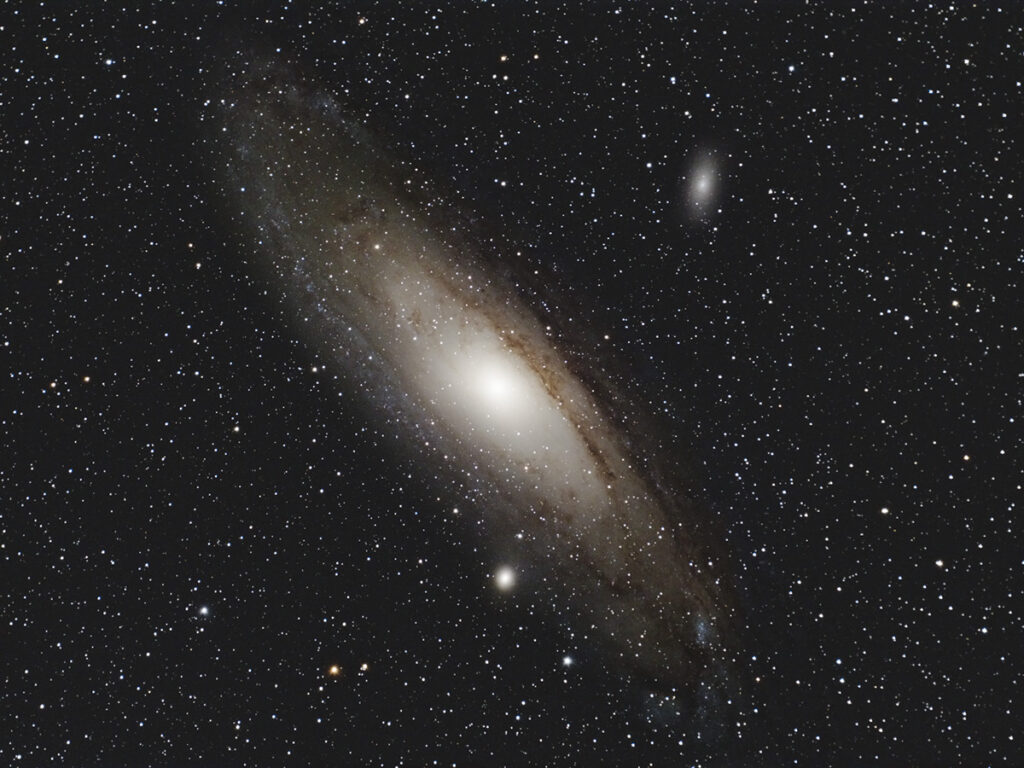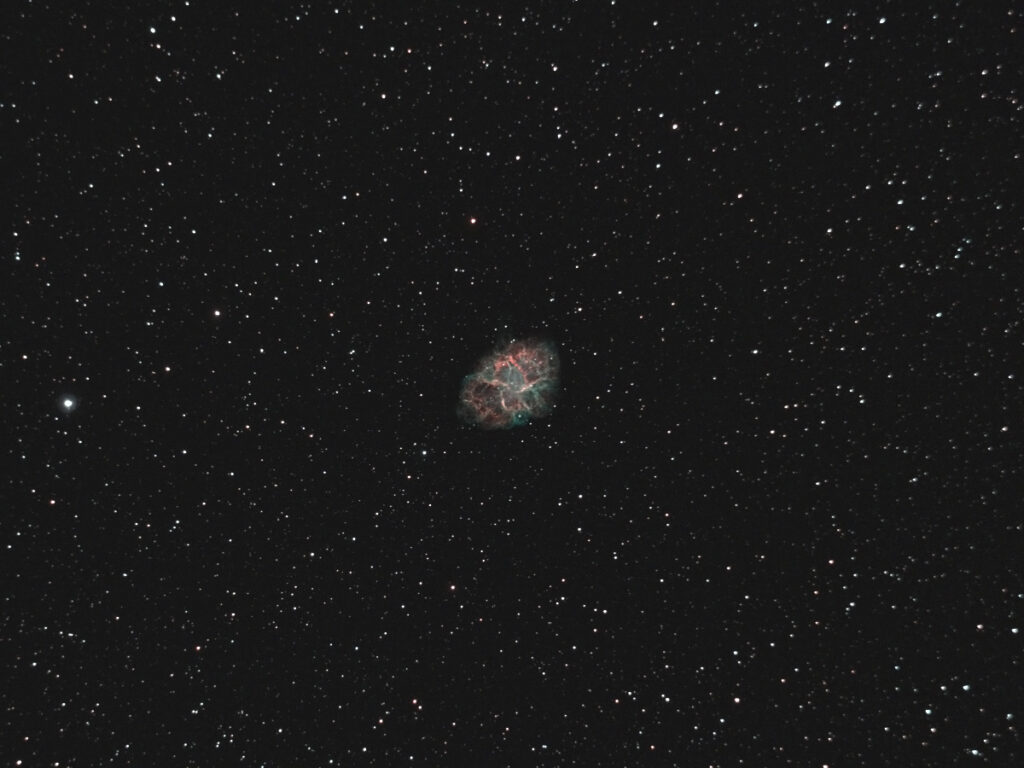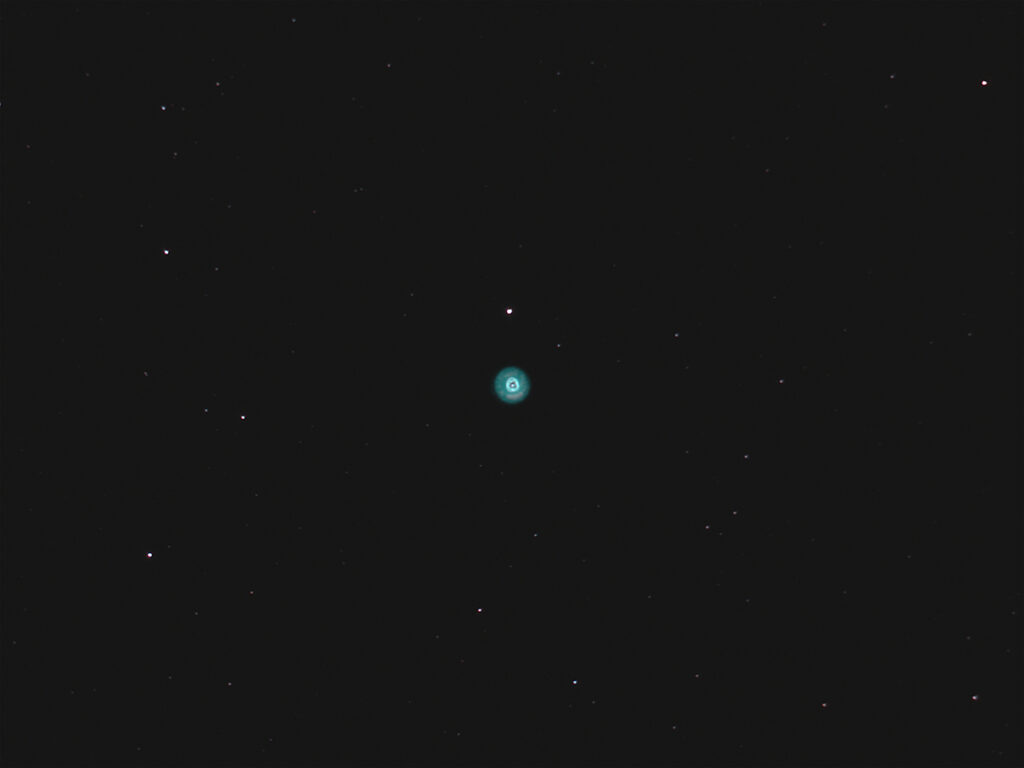
Telescope: Meade SN6 Comet Tracker at f/3.6, Orion Atlas EQ-G
Camera: QHY 268c, Mode 0, Gain 30, Offset 30, –20C
Filter: GSO IR Blocking Filter
Guide scope: Orion 50mm, ZWO ASI120MM mini
Exposure: 37x180sec, saved as RAW16/FITS
Darks: 32×180 sec
Flats: 64×1/0.250sec, Tee shirt flats taken at dusk
Average Light Pollution: Red zone, Bortle 8, poor transparency
Lensed Sky Quality Meter: 18.4 mag/arc-sec^2
Stacking: Mean with a 1-sigma clip.
White Balance: Nebulosity Automatic
Software: SharpCap Pro, Nebulosity, Deep Sky Stacker, Photoshop
M31 is an iconic spiral in the constellation of Andromeda. Under dark skies it is easily visible to the naked eye and from urban skies it is an easy object for binoculars and small telescopes. At a distance of some 2 million light years, it is the farthest object visible to the naked eye. M31 also has several satellite galaxies, two of which are visible here. M32 is about as bright as the core of M31 and is located at the bottom center of this field. To the upper right is the much fainter M110. It is easy to be disappointed with the visual appearance of M31 since it is often shown in highly processed images such as the one I give here. However, the true appearance is quite beautiful in its own way. The core is relatively bright and almost stellar, surrounded by a soft luminous glow that I always think of as pearl.
M31 is currently well place high in the east at sunset.


Recent Comments